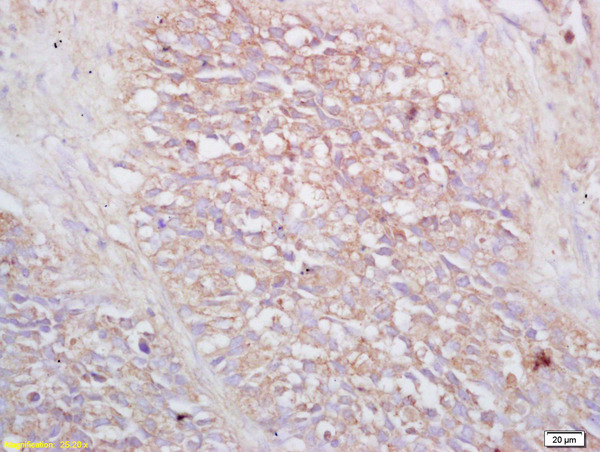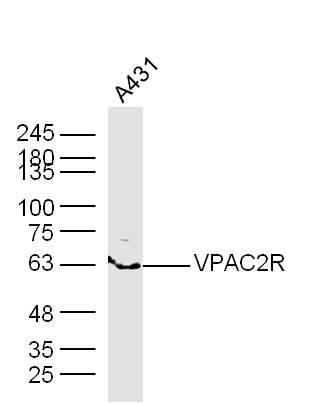
Formalin-fixed and paraffin embedded human lung carcinoma labeled with Rabbit Anti VIP receptor 2/VPAC2 Polyclonal Antibody, Unconjugated (bs-0197R) at 1:200 followed by conjugation to the secondary antibody and DAB staining
VPAC2R Polyclonal Antibody
BS-0197R
ApplicationsFlow Cytometry, Western Blot, ELISA
Product group Antibodies
ReactivityHuman, Mouse, Rabbit, Rat
TargetVipr2
Overview
- SupplierBioss Antibodies
- Product NameVPAC2R Polyclonal Antibody
- Delivery Days Customer16
- ApplicationsFlow Cytometry, Western Blot, ELISA
- Applications SupplierWB(1:300-5000), ELISA(1:500-1000), FCM(1:20-100)
- CertificationResearch Use Only
- ClonalityPolyclonal
- Concentration1 ug/ul
- ConjugateUnconjugated
- Gene ID29555
- Target nameVipr2
- Target descriptionvasoactive intestinal peptide receptor 2
- Target synonymsPACAP type III receptor; PACAP-R3; PACAP-R-3; pituitary adenylate cyclase-activating polypeptide type III receptor; vasoactive intestinal polypeptide receptor 2; vasopressive intestinal peptide receptor 2; VIP-R-2
- HostRabbit
- IsotypeIgG
- Protein IDP35000
- Protein NameVasoactive intestinal polypeptide receptor 2
- ReactivityHuman, Mouse, Rabbit, Rat
- Storage Instruction-20°C
- UNSPSC12352203
References
- Spatiotemporal Expression Changes of PACAP and Its Receptors in Retinal Ganglion Cells After Optic Nerve Crush. Ye D et al., 2019 Jul, J Mol NeurosciRead more

